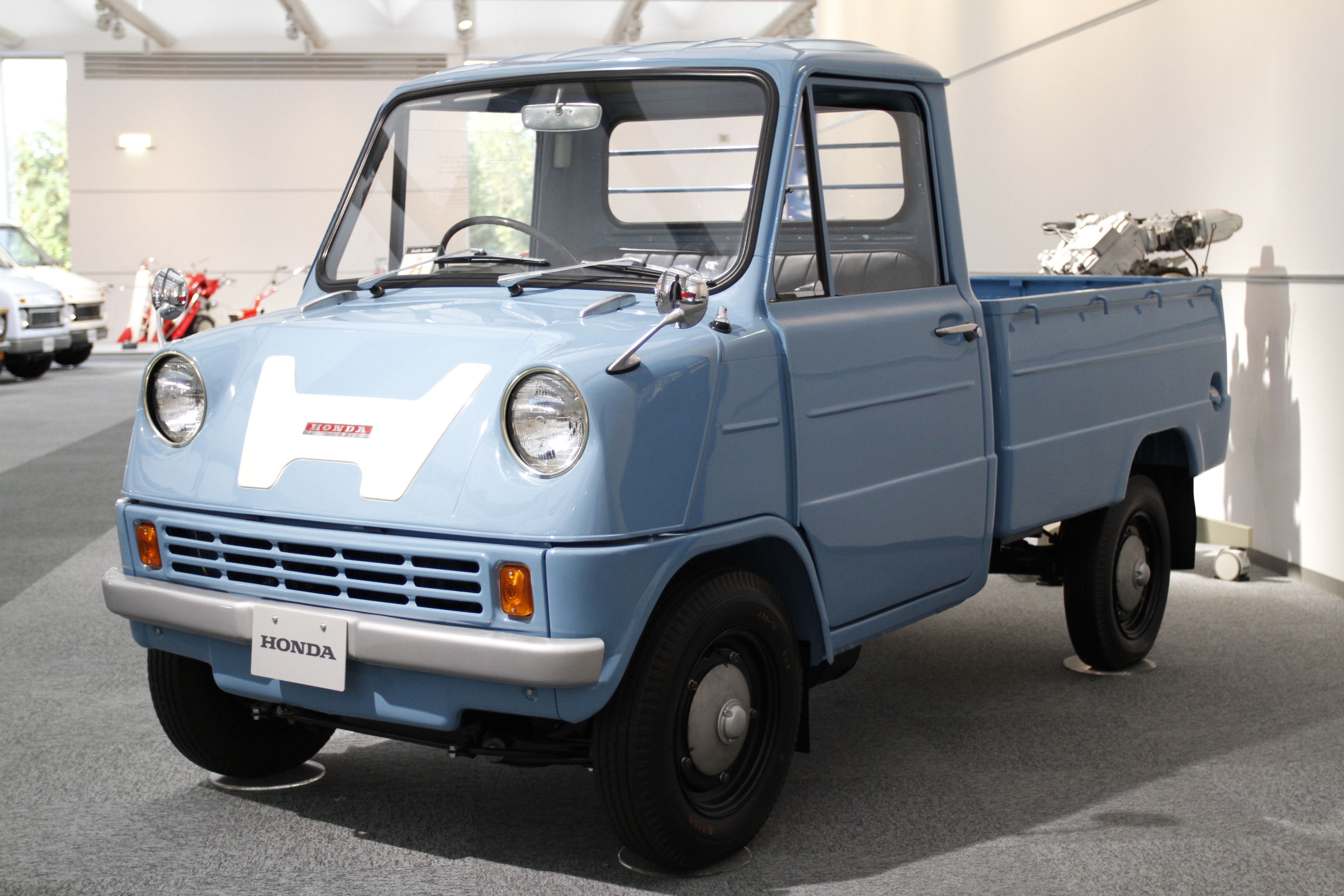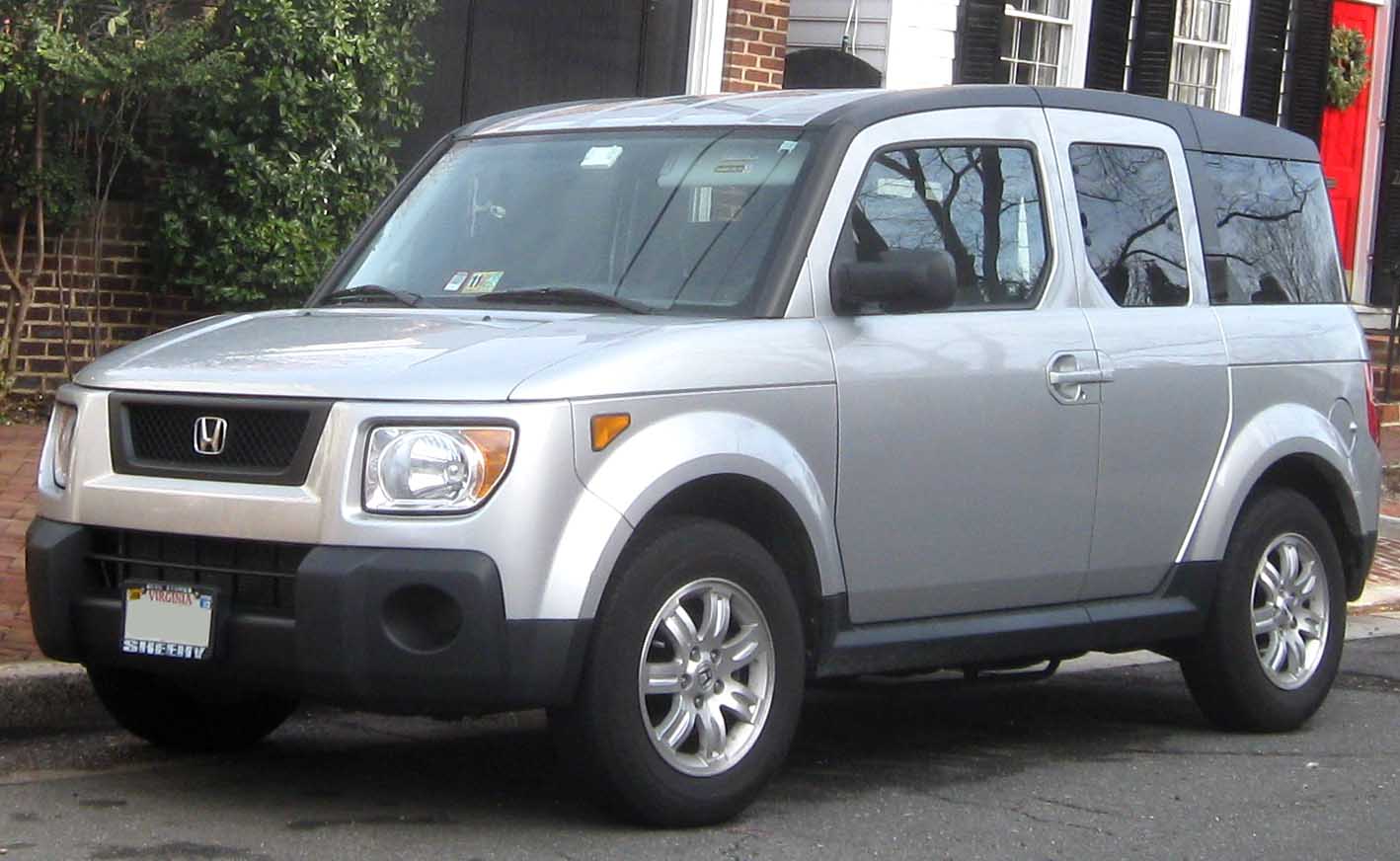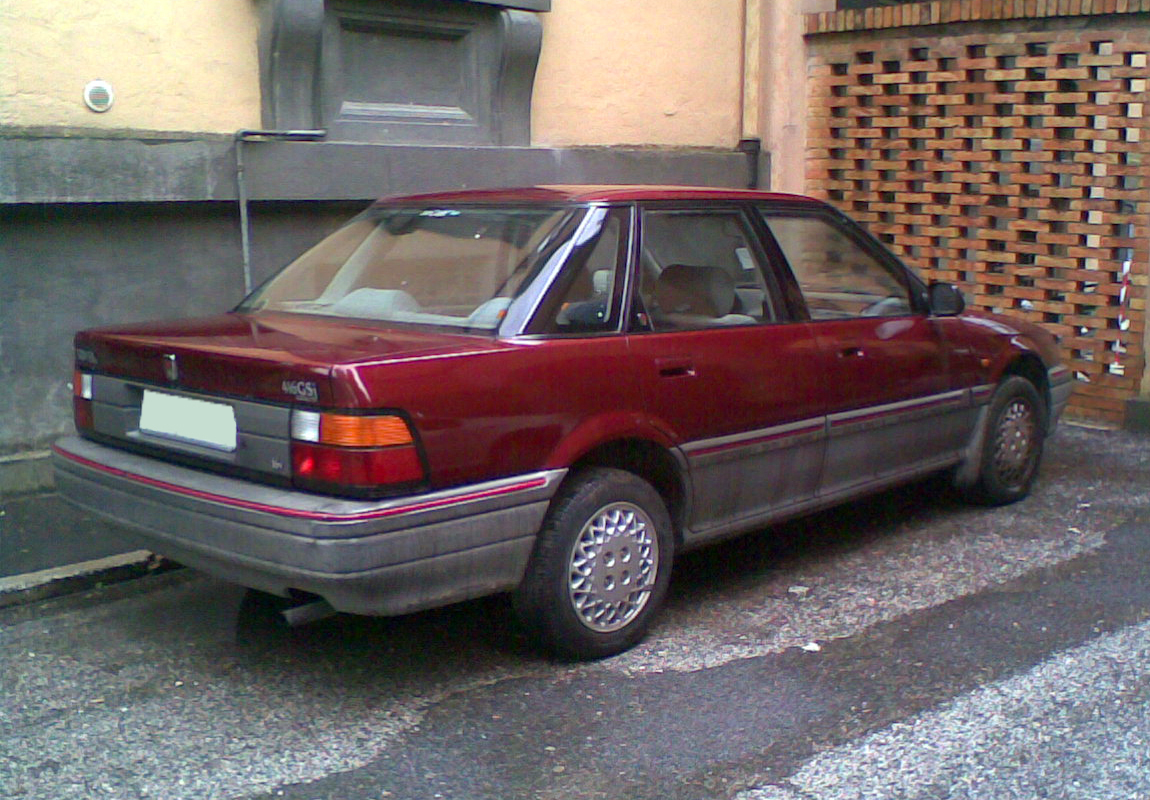|
Acura EL
The Acura EL is a compact executive car, subcompact executive car that was built at Honda's Alliston, Ontario, plant, and also the first Acura built in Canada. It was also exclusively sold in Canada. The EL is a Rebadging, badge-engineered Honda Civic with a higher level of features. Acura’s Acura A-Spec and Type-S models, Type-S trim was not offered on the EL. The Acura EL was a sales success. Representing 51% of Acura Canada's annual new-vehicle sales in its first full year, the EL remained Acura's top seller in Canada from 1997 to 2003. The Acura EL was replaced for the 2006 model year by the Acura CSX which, like the EL, was available only in Canada. __TOC__ First generation (1997–2000) Seeing that sales within Canada for the four-door Acura Integra were extremely low, Honda decided to replace it with the four-door-only Acura EL. The first generation of the EL was a somewhat altered version of the 1997–2000 Honda Civic with the differing front end, trunk, lights a ... [...More Info...] [...Related Items...] OR: [Wikipedia] [Google] [Baidu] |
Honda Domani
The Honda Domani () is a car made by Honda and marketed in east Asia, including Japan. The car was mutually developed during Rover's collaboration with Honda. It was introduced on 4 November 1992, replacing the Concerto in Honda's lineup, although that model lasted until 1995 in Europe. The Domani was another example of Honda taking one product and selling multiple versions at different dealership sales channels in Japan, called '' Honda Clio'' for the more upscale Domani, Honda Integra SJ at ''Honda Verno'' locations from 1996 to 2000. This was while ''Honda Primo'' sold the mechanically identical but aesthetically different Civic Ferio, along with the Civic three and five door hatchbacks. " Domani" is Italian for "tomorrow". In Japan, the Domani was also rebadged as the Isuzu Gemini. First generation: MA4-7 (1992–1997) It is mechanically identical to the early 1990s version of the Honda Civic (chassis code EG) and production ended in 1997. The Domani sedan had 1.6-li ... [...More Info...] [...Related Items...] OR: [Wikipedia] [Google] [Baidu] |
Honda
commonly known as just Honda, is a Japanese multinational corporation, multinational Conglomerate (company), conglomerate automotive manufacturer headquartered in Minato, Tokyo, Japan. Founded in October 1946 by Soichiro Honda, Honda has been the world's largest motorcycle manufacturer since 1959, reaching a production of 500 million . It is also the world's largest manufacturer of internal combustion engines measured by number of units, producing more than 14 million internal combustion engines each year. Honda became the second-largest Japanese automobile manufacturer in 2001. In 2015, Honda was the eighth largest automobile manufacturer in the world. The company has also built and sold the most produced motor vehicle in history, the Honda Super Cub. Honda was the first Japanese automobile manufacturer to release a dedicated luxury brand, Acura, on 27 March 1986. Aside from their core automobile and motorcycle businesses, Honda also manufactures garden equipment, marine eng ... [...More Info...] [...Related Items...] OR: [Wikipedia] [Google] [Baidu] |
Acura RSX
The Acura RSX is a vehicle manufactured by Honda for its upmarket brand Acura. First generation (2002-2006) The North American Acura RSX was introduced on July 2, 2001 as a replacement for the long running Integra nameplate. The name was a part of Acura's naming scheme changing the names of its models from recognizable names like "Integra" or "Legend" to alphabetical designations in order for buyers to build more recognition to the marque, and not the individual cars. Second generation (2026) The revival of the RSX was announced on January 15, 2025 as an electric coupé SUV. Honda said it would slot below the Acura ZDX, ZDX in the lineup. Unlike the ZDX which built on the General Motors BEV3 platform, the RSX is built on Honda’s own Honda Zero, Zero platform. References External links {{Authority control Acura vehicles, RSX Cars introduced in 2001 2000s cars ... [...More Info...] [...Related Items...] OR: [Wikipedia] [Google] [Baidu] |
Honda CR-V
The Honda CR-V (A variant model is called Honda Breeze in China By GAC-Honda since 2019,The CR-V is still manufactured by Dongfeng Honda) is a compact crossover SUV manufactured by Japanese automaker Honda since 1995. Initial models of the CR-V were built using the same platform as the Honda Civic, Civic. Honda began producing the CR-V in Sayama, Japan, and Swindon, United Kingdom, for worldwide markets, adding North American manufacturing sites in East Liberty, Ohio, United States, in 2007; El Salto, Jalisco, Mexico, in late 2007 (ended in early 2017); Alliston, Ontario, Canada, in 2012; and Greensburg, Indiana, United States, in February 2017. The CR-V is also produced in Wuhan for the Chinese market by Dongfeng Honda, and also marketed as the Breeze in China for the version produced at Guangzhou by Guangqi Honda. Honda states that "CR-V" stands for "Comfortable Runabout Vehicle," while the term "Compact Recreational Vehicle" is used in a British car review article that wa ... [...More Info...] [...Related Items...] OR: [Wikipedia] [Google] [Baidu] |
Honda Element
The Honda Element is a crossover SUV, compact crossover SUV manufactured by Honda and marketed in North America over a single generation for model years 2003–2011 — and noted for its boxy exterior styling with bi-parting side doors and its boxy, flexible interior layout. Manufactured in East Liberty, Ohio, the Element used a modified second generation Honda CR-V, CR-V automobile platform, platform with Front-wheel drive, front-wheel or a system marketed as “real time 4-wheel drive” that sends some torque to the rear wheels if the front wheels lose traction. In late 2010, shortly before its discontinuation, production had totaled approximately 325,000. Overview The Element followed a concept called ''Model X'' which was developed by a core group of Honda R&D engineers in 1998 and debuted at the 2001 North American International Auto Show in Detroit. The Model X was designed as an activity-oriented vehicle combining features of a pickup truck and a sport utility ... [...More Info...] [...Related Items...] OR: [Wikipedia] [Google] [Baidu] |
Spoiler (automotive)
A spoiler is an Automotive aerodynamics, automotive aerodynamic device whose intended design function is to 'spoil' unfavorable air movement across the body of a vehicle in motion, usually manifested as Spoiler (aeronautics), lift, turbulence, or drag. Spoilers on the front of a vehicle are often called air dams. Spoilers are frequently fitted to race car, race and high-performance sports cars, although they have also become common on passenger vehicles. Spoilers are added to cars primarily for styling and either have little aerodynamic benefit or worsen the aerodynamics. The term "spoiler" is often mistakenly used interchangeably with "wing". An automotive wing is designed to generate downforce as air passes around it, not simply disrupt existing airflow patterns. Rather than decreasing drag, automotive wings actually increase drag. Operation Aerodynamics plays a critical role in a car's behavior at higher speeds. Vehicles must be stable and balanced first at lower speeds t ... [...More Info...] [...Related Items...] OR: [Wikipedia] [Google] [Baidu] |
VTEC
VTEC (described as ''Variable Valve Timing & Lift Electronic Control'', but stands for ''Valve Timing Electronically Controlled'') is a system developed by Honda to improve the volumetric efficiency of a four-stroke internal combustion engine, resulting in higher performance at high RPM, and lower fuel consumption at low RPM. The VTEC system uses two (or occasionally three) camshaft profiles and hydraulically selects between profiles. It was invented by Honda engineer Ikuo Kajitani. It is distinctly different from standard VVT (variable valve timing) systems which change only the valve timings and do not change the camshaft profile or valve lift in any way. Context and description Japan levies a tax based on engine displacement, and Japanese auto manufacturers have correspondingly focused their research and development efforts toward improving the performance of their smaller engine designs. One method for increasing performance into a static displacement includes forced i ... [...More Info...] [...Related Items...] OR: [Wikipedia] [Google] [Baidu] |
Honda Of Canada Manufacturing
Honda of Canada Manufacturing () is located in Alliston, Ontario and is the automobile manufacturing division of Honda Canada Inc. Manufacturing The Honda of Canada Manufacturing (HCM) plants in Alliston have a land area of and have their own recreation centre with a full NHL-sized hockey arena, physical fitness areas, a baseball diamond, and volleyball and tennis courts. The large cavernous plants require radios between members for communication and cold water chillers for HVAC systems. , the three plants have more than 4,200 employees and have an annual capacity of 390,000 vehicles. Plant 1 was built in 1986. It is the first Canadian manufacturing facility by a Japanese automaker. A stamping and bumper painting line was added in 1989. Production of the Civic coupe commenced in 1993. Honda's second plant in Alliston began production in 1998, originally building Honda Odyssey vans for the 1999 model year. Production of the Odyssey in Canada stopped in 2004 to make room for the ... [...More Info...] [...Related Items...] OR: [Wikipedia] [Google] [Baidu] |
Inline-four Engine
A straight-four engine (also referred to as an inline-four engine) is a four-cylinder piston engine where cylinders are arranged in a line along a common crankshaft. The majority of automotive four-cylinder engines use a straight-four layout (with the exceptions of the flat-four engines produced by Subaru and Porsche) and the layout is also very common in motorcycles and other machinery. Therefore the term "four-cylinder engine" is usually synonymous with straight-four engines. When a straight-four engine is installed at an inclined angle (instead of with the cylinders oriented vertically), it is sometimes called a slant-four. Between 2005 and 2008, the proportion of new vehicles sold in the United States with four-cylinder engines rose from 30% to 47%. By the 2020 model year, the share for light-duty vehicles had risen to 59%. Design A four-stroke straight-four engine always has a cylinder on its power stroke, unlike engines with fewer cylinders where there is no power st ... [...More Info...] [...Related Items...] OR: [Wikipedia] [Google] [Baidu] |
Honda D Engine
The Honda D-series Straight-four engine, inline-four cylinder engine is used in a variety of compact models, most commonly the Honda Civic, Honda CRX, CRX, Honda Logo, Logo, Honda Stream, Stream, and first-generation Honda Integra, Integra. Engine displacement ranges between 1.2 and 1.7 liters. The D series engine is either SOHC or DOHC, and might include VTEC variable valve lift. Power ranges from in the Logo to in the Japanese market (JDM) Civic. D-series production commenced in 1983 (for the 1984 model year) and ended in 2005. D-series engine technology culminated with production of the D15B three-stage VTEC (D15Z7) which was available in markets outside of the United States. Earlier versions of this engine also used a single port fuel delivery system called PGM-CARB, signifying that the carburetor was computer controlled. D12 series engines (1.2 liter) D12A * Found in: ** 1986-1988 Honda City GG (Japanese Market) *** Displacement: 1237 cc (75.5 Cubic inch, cu in) *** Bo ... [...More Info...] [...Related Items...] OR: [Wikipedia] [Google] [Baidu] |
Rover 400
The Rover 400 Series, and later the Rover 45, are a series of small family cars that were produced by the British manufacturer Rover from 1990 to 2005. The cars were co-developed as part of Rover's collaboration with Honda. The first-generation 400 was based on the Honda Concerto, and the Mark II 400 (later the Rover 45) was based on the Honda Domani/Civic. Honda petrol engines were used in some Rover models, while the market competitive Rover L-series diesel engine was used from the mid-1990s in Hondas, before they designed their own diesel engine. Rover 400 (R8; 1990–1998) The original 400 Series, launched in 1990 as a four-door saloon, was a saloon version of the second-generation Rover 200 Series hatchback, both sharing the codename R8 during development. The 200 Series had been launched six months earlier. Like the 200, the model was designed in collaboration with Honda (who produced the corresponding designed for Europe Concerto model) and both models would sh ... [...More Info...] [...Related Items...] OR: [Wikipedia] [Google] [Baidu] |







